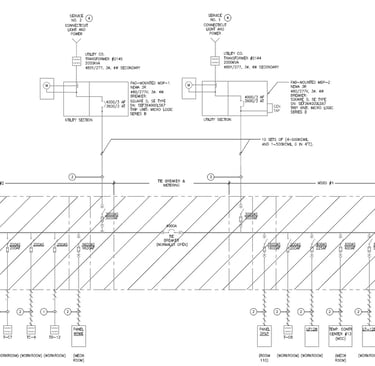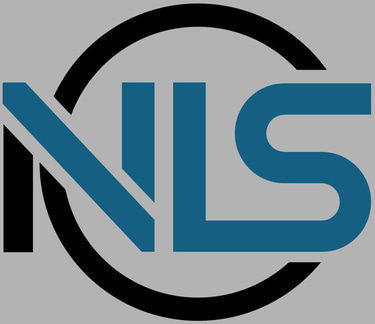Do You Need Engineered Drawings? It’s More Than Just a Permit Requirement.
NLS Engineering
2/1/20253 min read


Determining whether you need engineered drawings for your electrical project isn’t always a simple yes-or-no answer. Many builders, owners, and architects start by checking local codes, state regulations, or asking the local Authority Having Jurisdiction (AHJ). While these are critical steps, they shouldn’t be the only ones. The decision to engage an electrical engineer should be about far more than just meeting a legal or process-driven requirement. It should be about adding value, mitigating risk, and ensuring long-term project success.
I.E. about increasing the likelihood of project success for you, whatever your definition of success is.
Beyond the Permit: The True Value of an Electrical Engineer
Let’s be clear: a licensed electrical engineer is not just a stepping stone to a permit. Yes, stamped drawings may be required for projects that exceed certain size thresholds, involve high-amperage service entrances, or have complex system designs (and in that case, you're stuck with us, ha!). But if that’s all you see in an electrical engineer, you’re missing out on the opportunity at having a partner bring you closer to your ideal outcome while running point with the contractor, permitting agency, inspectors, commissioning agents, and vendors.
When you work with us, you get more than a stamp. You get a partner that:
Reduces Risk: We ensure your electrical systems are designed to withstand the unexpected. From voltage drop analysis to fault current calculations, we proactively identify and resolve issues before they become expensive mistakes.
Enhances System Performance: Electrical engineers design for efficiency, not just code compliance. We optimize service entrance sizing, grounding schemes, and distribution layouts to reduce operational costs and extend system life.
Integrates with Other Disciplines: Architects, builders, and developers all have unique challenges. We ensure electrical design works seamlessly with mechanical, structural, and architectural considerations, avoiding costly redesigns and coordination headaches.
Supports Future Expansion: We don’t just design for today; we help you plan for the future. Whether it’s scalable infrastructure for tenant improvements or future-proofed systems for emerging technologies, we build flexibility into your electrical design.
Ensures Compliance Without Compromise: Meeting code is the baseline, not the goal. We take compliance off your plate so you can focus on the bigger picture—getting your project done on time and within budget.
Speeds Up Permitting and Approval: With thorough, well-coordinated designs, we eliminate back-and-forth with the AHJ, reducing delays and ensuring a smoother permitting process.
NEC: More Than Just a Stamp Requirement
I get it, the NEC means National Electrical Code, not Needs Engineered Construction documents. And licensed electricians are bound by that code and must comply, just as engineers do. Electrical inspectors and fire marshals, as agents of the AHJ, must enforce compliance. And on top of that, all of this code compliant construction can be performed without an engineer (well, any general public use building typically requires an engineer), but an engineer adds value through understanding the code and its application at a very deep level. We design drawings using the code every day and are especially trained against all National Fire Protection Agency (NFPA) documents.
This is where we shine... We partner with electricians (who spend every day building things, much better than we do) to provide the roadmap to compliance (we spend all day looking at codes and designing systems that comply). An electrician and an engineer are the perfect pairing to bring forth a well-constructed, compliant electrical system, the first time. And not only this, but engineers give you the ability to take engineered drawings and use them to get construction bids from the general contracting community so YOU can be a little more competitive with pricing, but that's another discussion altogether.
A Partner, Not a Ghost
Too many engineering firms take a minimalist approach—they provide the absolute bare minimum drawings just to get the job done and then disappear. That’s not how we work. We want to be the greatest stepping stone you’ve ever used. We work alongside you, not in the shadows, making sure you have the technical expertise, strategic insight, and design foresight to take your project to the next level.
So, do you need engineered drawings? Maybe. But do you need an electrical engineering partner that actively contributes to the success of your project? Absolutely.
If you’re ready to work with a firm that goes beyond the stamp, let’s talk.
CONTACT US
nextlevel@nls-engineering.com
(508) 591-0980
